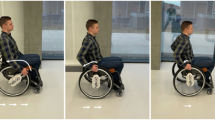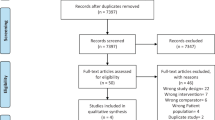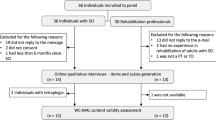Abstract
Many long term wheelchair users develop shoulder pain. The purpose of this study was to examine the reliability and validity of the Wheelchair User's Shoulder Pain Index (WUSPI), an instrument which measures shoulder pain associated with the functional activities of wheelchair users. This 15-item functional index was developed to assess shoulder pain during transfers, self care, wheelchair mobility and general activities. To establish test-retest reliability, the index was administered twice in the same day to 16 long term wheelchair users and their scores for the two administrations were compared by intraclass correlation. To establish concurrent validity, the index was administered to 64 long term wheelchair users and index scores were compared to shoulder range of motion measurements. Results showed that intraclass correlation for test-retest reliability of the total index score was 0.99. There were statistically significant negative correlations of total index scores to range of motion measurements of shoulder abduction (r = -0.485), flexion (r = –0.479) and shoulder extension (r = –0.304), indicating that there is a significant relationship of total index score to loss of shoulder range of motion in this sample. The Wheelchair User's Shoulder Pain Index shows high levels of reliability and internal consistency, as well as concurrent validity with loss of shoulder range of motion. As a valid and reliable instrument, this tool may be useful to both clinicians and researchers in documenting baseline shoulder dysfunction and for periodic measurement in longitudinal studies of musculoskeletal complications in wheelchair users.
Similar content being viewed by others
Log in or create a free account to read this content
Gain free access to this article, as well as selected content from this journal and more on nature.com
or
References
Gellman H, Sie I, Waters R L . Late complications of the weight bearing upper extremity in the paraplegic patient. Clin Orthop 1988; 223: 132-135.
Nichols P, Norman P A, Ennis J R . Wheelchair user's shoulder. Scand J Rehabil Med 1979; 11: 29-32.
Pentland W E, Twomey L T . The weight bearing upper extremity in women with long term paraplegia. Paraplegia 1991; 29: 521-530.
Waring W P, Maynard F M . Shoulder pain in acute traumatic quadriplegia. Paraplegia 1991; 29: 37-42.
Burnham R S, May L, Nelson E, Steadward R, Reid D C . Shoulder pain in wheelchair athletes: The role of muscle imbalance. Am J Sports Med 21: 238-242.
Curtis K A et al. Development of the wheelchair user's shoulder pain index (WUSPI). Paraplegia 1995; 33: 290-293.
Jette A M . Concepts in health and methodological issues in functional assessment. In Granger DV, Gresham GE (eds). Functional Assessment in Rehabilitation Medicine. Wiliams and Wilkins: Baltimore pp 46-64.
Rothstein J M . Measurement and clinical practice: Theory and application. In Rothstein JM (ed). Measurement in Physical Therapy: Clinics in Physical Therapy. Churchill Livingstone: New York, pp 1-46.
Bayley J C, Cochran T P, Sledge C B . The weight-bearing shoulder: The impingement syndrome in paraplegics. J Bone Joint Surg Am 1987; 69: 676-678.
Curtis K A, Dillon D A . Survey of wheelchair athletic injuries: Common patterns and prevention. Paraplegia 1985; 23: 170-175.
Wylie E J, Chakera T M . Degenerative joint abnormalities in patients with paraplegia of duration greater than 20 years. Paraplegia 1988; 26: 101-106.
Author information
Authors and Affiliations
Rights and permissions
About this article
Cite this article
Curtis, K., Roach, K., Applegate, E. et al. Reliability and validity of the Wheelchair User's Shoulder Pain Index (WUSPI). Spinal Cord 33, 595–601 (1995). https://doi.org/10.1038/sc.1995.126
Issue date:
DOI: https://doi.org/10.1038/sc.1995.126



